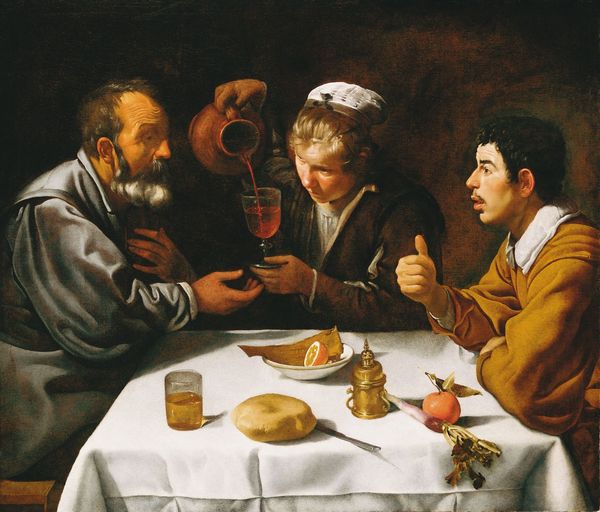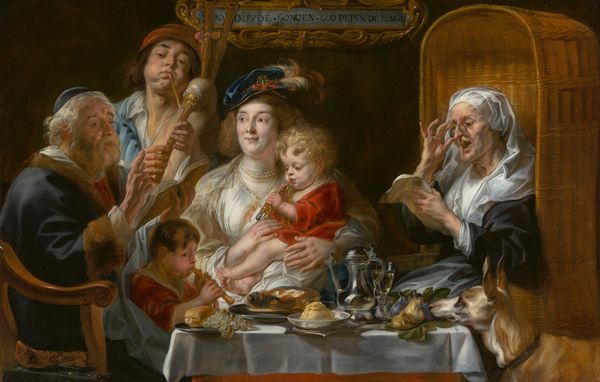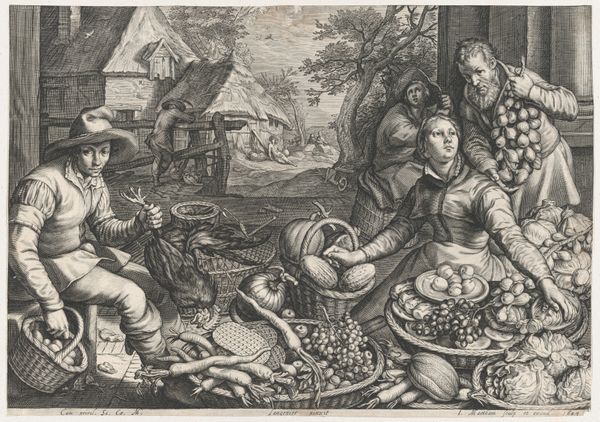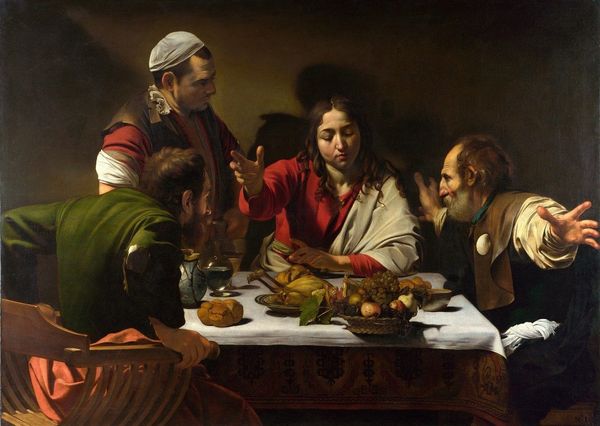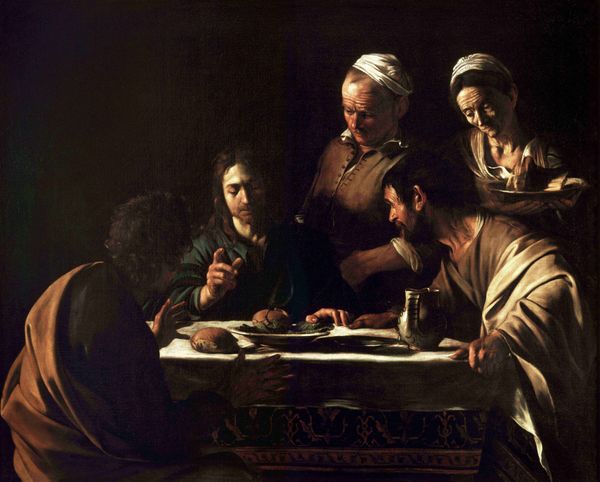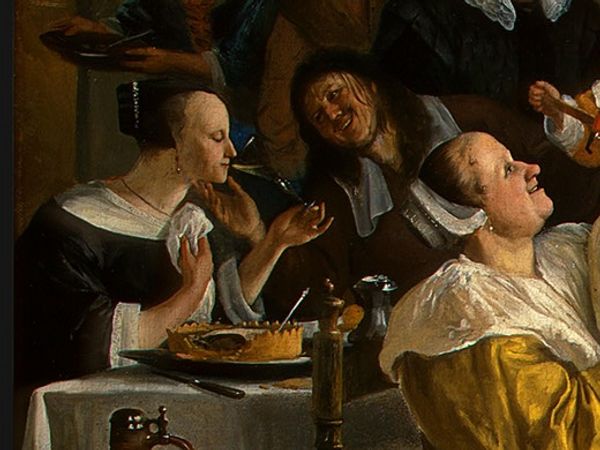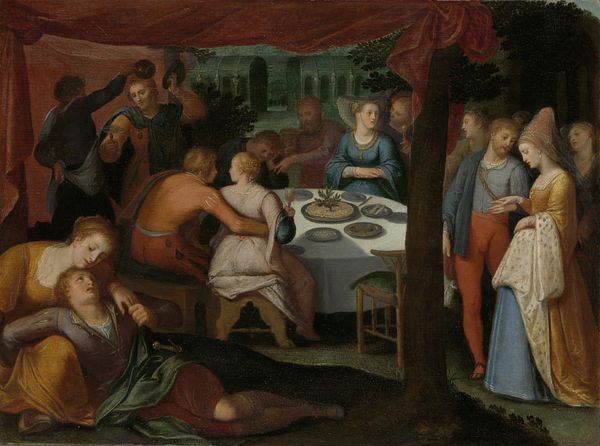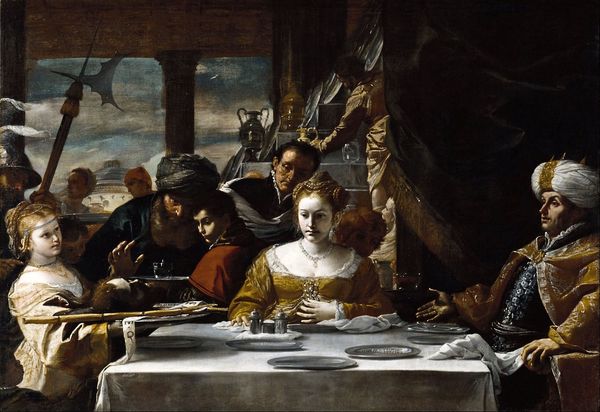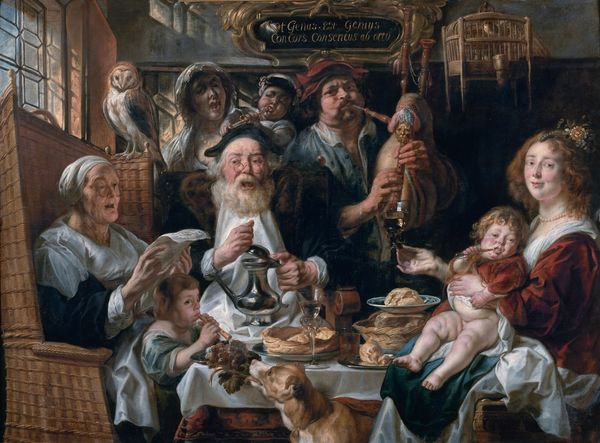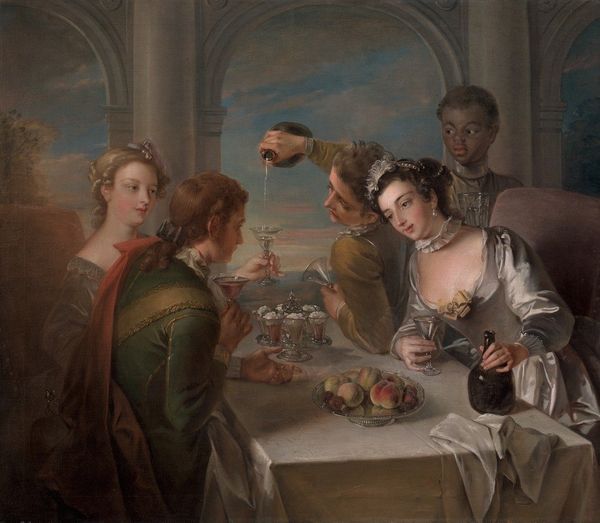
painting, oil-paint
#
baroque
#
dutch-golden-age
#
painting
#
oil-paint
#
oil painting
#
food art
#
earthenware
#
genre-painting
#
northern-renaissance
Copyright: Public domain
Curator: Take a moment to regard "Table with Orange, Olives and Pie" painted by Clara Peeters around 1611. It's a stunning example of early still life, currently housed at the Museo del Prado. Editor: Wow, it feels opulent, yet…almost melancholy. The sharp light catches all these incredible textures, from the glassy glint of the wine to that glorious pie crust, but the spread seems strangely isolated, contained. Curator: Absolutely. Peeters, one of the few recognized women artists of the Dutch Golden Age, elevates the everyday to something…almost sacred. I’m especially drawn to the labor, care, and expense it took to prepare such a meal in this period. Editor: You can practically smell it all. That elaborately decorated pie… it looks like shortcrust pastry, though perhaps enriched with almond flour if you go back to recipes of the time, the ridges meticulously pinched. Were these pieces commissioned specifically for merchants’ guilds at the time? How else would they purchase the raw materials, considering Peeters may also have owned all these containers on top? Curator: It's entirely possible. Patronage was everything then. What I love is how Peeters is so in control of the objects themselves, arranging them to convey the right message through precise detail, but they never come alive on the canvas! It's all…ingredients for other paintings and for us viewers, too! Even the oranges appear as accessories and objects. She repeats their color around the display too to reinforce this composition! Editor: A feast, then, for both the belly and the eye – a testament to both domestic skill and the thriving global trade that made such displays possible. But, also, is this meant to appeal to consumers for certain items, through almost product placement in her compositions, the painting in turn serves to perpetuate social rituals and behaviors Curator: Maybe. The details could showcase Delftware techniques and materials from faraway, exotic places like spices and dried goods—in short, a display of the artist’s virtuosity. She's offering, through composition and pigment, a visual seduction. But maybe her use of certain shapes means something: it has become the viewers task to interpret it from there on, and into infinity… Editor: And for that matter—how many iterations or batches of colors, clay and metal came to this specific location. If anything is worth noting: is that she brings raw materiality that exceeds both consumption and domestic space together here! Curator: Thinking of the care taken into the craftsmanship and materiality here makes you understand that a simple food arrangement can make something truly special and thought-provoking! Editor: Exactly, a powerful, enduring glimpse into the nexus of craft, consumption, and social identity of labor and display through materiality—that endures today, to a larger mass.
Comments
No comments
Be the first to comment and join the conversation on the ultimate creative platform.
